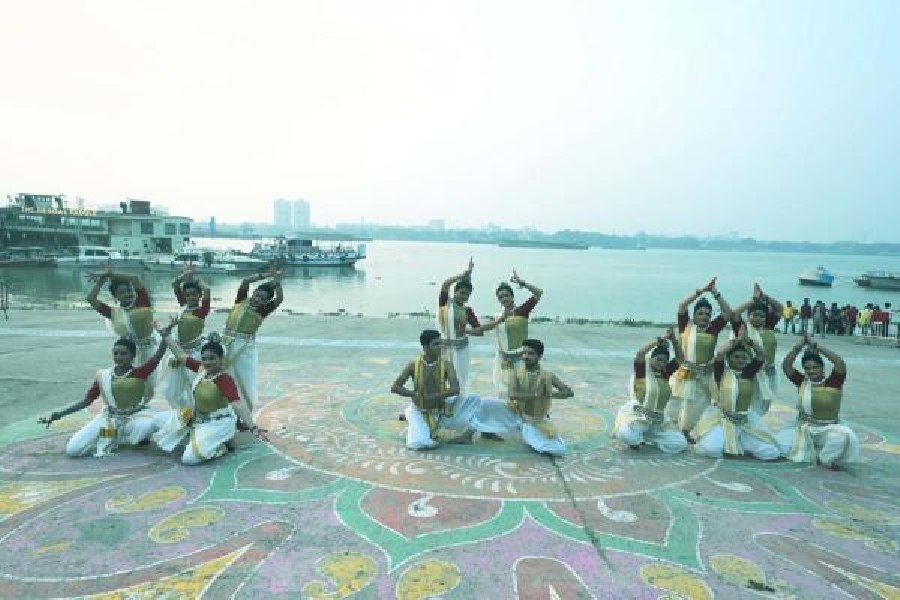Three young Kolkatans enthralled an audience at Baje Kadamatala Ghat, along the Hooghly, on Sunday afternoon with stories depicting how the river and the growth of the city are intertwined, with music playing in the background.
The 15-minute session detailed how the Hooghly emerged as a major trade route when the Europeans ruled Kolkata and its neighbouring towns and cities.
The presence of Fort William, the seat of power of the British, in such close proximity to the Hooghly lent the river an indirect power, said Zahid Hossain, one of the storytellers and a founder member of East India Dastangos, which is trying to revive the old Dastangoi tradition of storytelling.
Dastangoi refers to the art of Urdu storytelling that flourished in the Mughal court.
Hossain and his co-storyteller, Swati Sharma, told the audience about the arrival of Wajid Ali Shah, James Prinsep and Lord Cornwallis, who were only a few among the scores of famous persons who arrived in ghats along the Hooghly.
“Wajid Ali Shah (deposed nawab of Awadh) arrived at Bichali Ghat. His arrival and settlement in Metiabruz gave birth to a tradition, a new culture in the city, some of which survives to this day. The ghats have so much of history and so many stories are associated with them,” Hossain told The Telegraph.
“James Prinsep arrived at Chandpal Ghat. After his death, his friends thought about building a ghat in his memory,” he said.
The story telling session, done jointly by East India Dastangos and Living Waters Museum, was part of a programme organised by Concern for Calcutta, an organisation working towards the development of the city and the life of its citizens.
A dance presentation, titled Om Ganga, by the Ramayani Institute of Performing Arts followed.
Thousands of people still use the ghats every day — to bathe, perform rituals or cross the river by ferry.
This newspaper has reported that the Hooghly is being constantly polluted because of the discharge of untreated sewage into the river and solid waste on the ghats getting mixed with the water.
Many of the ghats along the river are in a crumbling condition. Most of the ghats do not have changing rooms, though they are used by hundreds every day for bathing.
One of the objectives of Sunday’s programme was to raise awareness about the river and the ghats along it.







